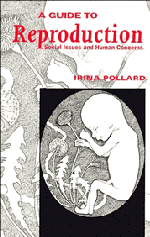Book contents
- Frontmatter
- Contents
- Preface and acknowledgements
- Part one Reproductive biology
- Part two Reproduction and social issues
- 13 Population dynamics, stress and the general theory of adaptation
- 14 Extinctions and the conservation of endangered species
- 15 Artificial control of fertility
- 16 Hormonal contributions to errors of sexual differentiation
- 17 The acquired immunodeficiency syndrome (AIDS) epidemic: a global emergency
- 18 The effect of nutrition and exercise on the hypothalamic–pituitary–gonadal axis
- 19 Principles of teratology and an update on nicotine, ethanol and caffeine abuse
- 20 Ethical aspects of human reproductive biology
- Index
18 - The effect of nutrition and exercise on the hypothalamic–pituitary–gonadal axis
Published online by Cambridge University Press: 05 June 2012
- Frontmatter
- Contents
- Preface and acknowledgements
- Part one Reproductive biology
- Part two Reproduction and social issues
- 13 Population dynamics, stress and the general theory of adaptation
- 14 Extinctions and the conservation of endangered species
- 15 Artificial control of fertility
- 16 Hormonal contributions to errors of sexual differentiation
- 17 The acquired immunodeficiency syndrome (AIDS) epidemic: a global emergency
- 18 The effect of nutrition and exercise on the hypothalamic–pituitary–gonadal axis
- 19 Principles of teratology and an update on nicotine, ethanol and caffeine abuse
- 20 Ethical aspects of human reproductive biology
- Index
Summary
In this book the close connection between stress, of varying etiology, and reproductive dysfunction has been repeatedly pointed out. Reproductive dysfunction caused by environmental factors, such as excessive physical activity, food restriction and abnormal eating behaviour (as in obesity and anorexia nervosa) has been well documented. Since the 1970s, a striking increase in eating disorders occurring most frequently, but not exclusively, in young women living in affluent societies has been reported. It has been hypothesized that a primary cause for this increased prevalence has been an obsession with thinness and obesity. It is interesting to note that the fattest of all mammals are humans whose adipose tissue to total body mass varies from 8% to over 35%. The regulation of fat distribution is complex, involving hormones, neurotransmitters and neuropeptides which integrate environmental, behavioural, psychogenic and physiological mechanisms.
NUTRITION AND THE MENSTRUAL CYCLE
Ovulation is readily suppressed by food shortage. It can also be suppressed by excessive exercise or cold exposure if these metabolic drains are not fully compensated for by an increase in food consumption. The evolutionary basis for these associated effects relate to the female mammal's need to reproduce within good foraging conditions in order to maximize her and her offsprings' survival. Generally, humans no longer need to obtain sustenance by extensive foraging, but they still possess these ancient evolutionary responses. Pubertal ovulation is particularly sensitive to energetic and nutritional constraints (Chapter 3). Facets of ordinary life such as the food eaten and the effort expended in acquiring it also affect the menstrual cycle. It has long been known that there are differences in steroid hormone metabolism between vegetarians and non-vegetarians, although the underlying reasons are still conjectural.
Information
- Type
- Chapter
- Information
- A Guide to ReproductionSocial Issues and Human Concerns, pp. 338 - 352Publisher: Cambridge University PressPrint publication year: 1994
